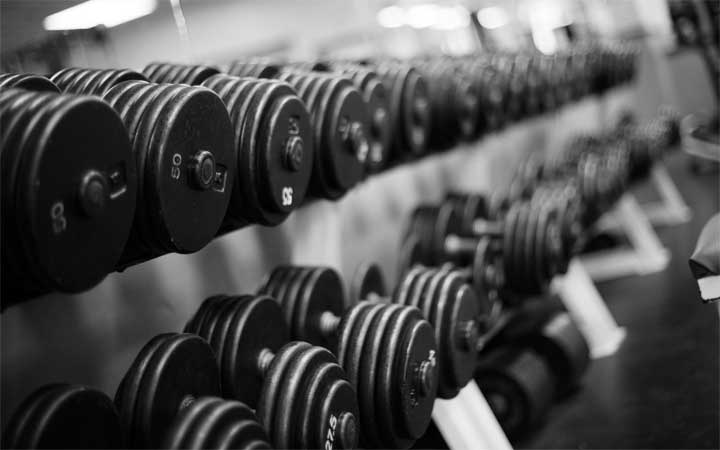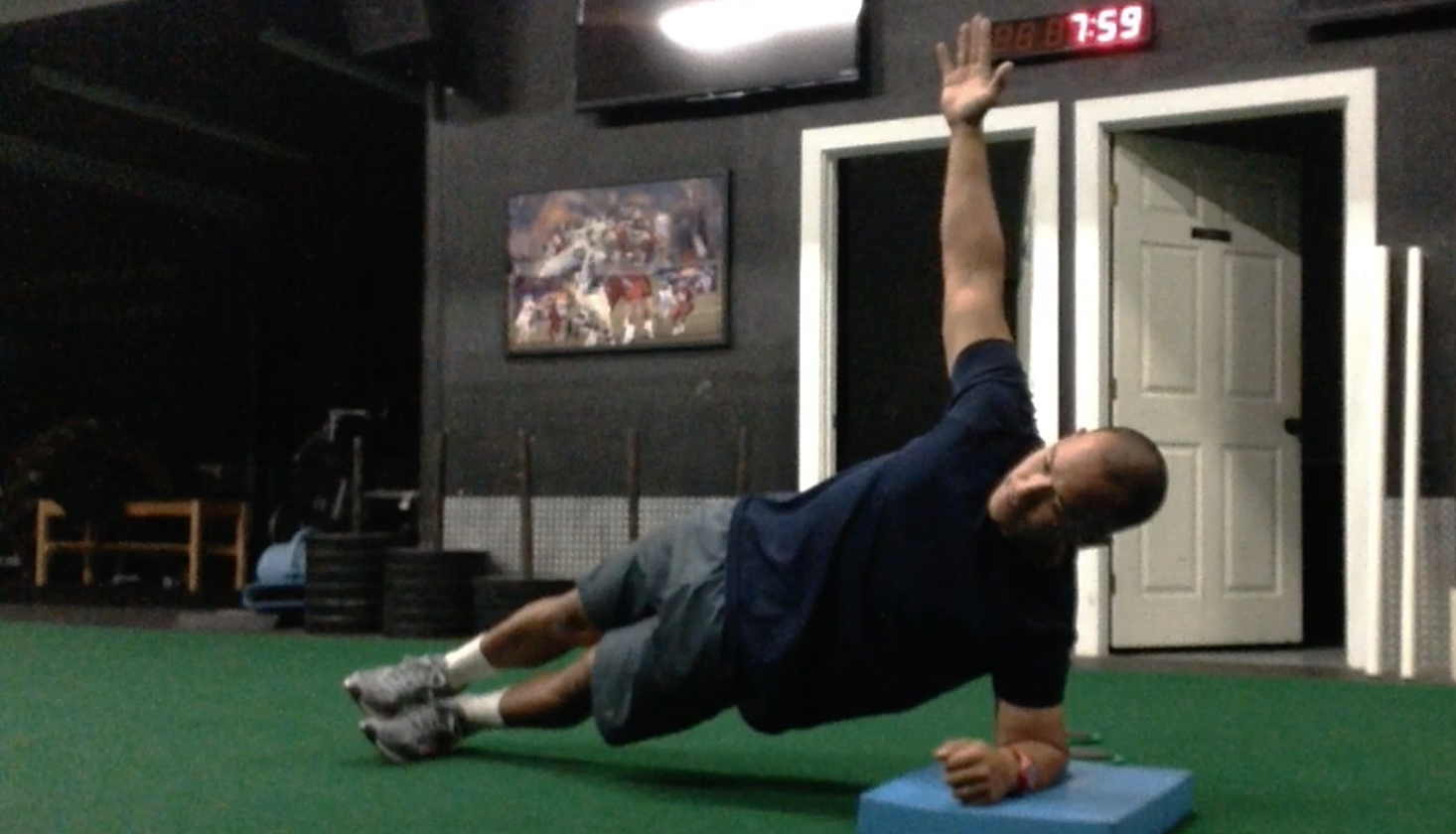
The way most people perform circuit training is inefficient and could be done in a much more effective way. You’ve heard the term circuit training before. It’s simply when you perform a series of exercises done one after the other with little to no rest in between exercises.
Some of the benefits of circuit training are:
- Increases heart rate
- Time-efficient
- Awesomely effective when done properly
- Allows you to work in a small space when in a crowded gym
Enter the 6PM headache at the gym.
I hear about this problem all the time and maybe you experience it yourself. You know what I’m talking about. You have a program you are stoked to start on and cant’t wait to get at it after work. You make sure to get there before the rush but it doesn’t matter because the whole world wants to train at the same time as you.
After working in gyms for a good amount of my life, 10AM is the best time to go to the gym. But who can leave their work at 10AM to get some gym time?
Working out at 6AM? Forget about it. You come across the same problem with the rest of the early birds.
And…
You don’t want to be the guy who snags multiple machines and dumbbells to get your circuit training in. That’s just bad gym etiquette. Don’t be that guy.
COMPLEX TRAINING
Complex training is a specific type of circuit training that takes it to another level by just using one piece of equipment.
You don’t have to worry about taking claim of the squat rack, a dumbbell area, and a seated row. All you need is one piece of equipment. Simple.
You can easily grab a pair of dumbbells and find one area where you can get your work on and not have to deal with fighting for space.
Dumbbell complexes are done by performing one exercise after the other with little not to break in between exercises. The amount of exercises will depend but most fall into 4-6 exercises because after you go beyond that, it gets hard to remember what’s next.
Not only is this perfect for crowded gyms but also an easy way to start your own home gym that doesn’t take up a lot of space.
WHY COMPLEX TRAINING IS KŪ
There are more than meets the eyes with complex training.
And no, it’s not Crossfit. Complex training has been around long before Crossfit.
When creating Complexes, it’s best to think of the bigger picture and how you can create a biochemical reaction within your body. It’s more than just the muscles and working up a sweat.
With Complexes, one of the main chemical response that happens in your body is the release of Lactic Acid. Lactic Acid begins to build up when the cells in the muscles loses their ability to produce energy. This is when your muscles feel heavy and you can barely produce any force.
Remember those times when you’d do biceps curls until you couldn’t anymore and you had to use your whole body to curl up 20 lbs. No? Maybe it was just me.
Complex training involves you training multiple muscle groups that creates not only muscular fatigue but also fatigues your whole system. When you do this, not only are you getting a great workout in but you are also speeding up the process of seeing results.
HOW TO CREATE A COMPLEX WORKOUT
Remember, anyone can make a hard ass workout that leaves you on the floor in a pool of sweat. The main question is how can you create an effective workout that produces continuous progress. If you do a complex workout that leaves you in pain and fatigued for days and keeps you out of the gym, then it probably wasn’t the smartest thing you did.
Like everything, there is a good and bad way to program them. Here are a guidelines you can follow to create a smart program:
- Start from most neural exercise to the least. This means, don’t do bicep curls before DB Snatches. You want to do the hardest and must technical movement first before you increase fatigue
- Don’t do exercises because you think it’ll make it super hard. Safety is always first. No sense putting yourself at risk of injury by placing an difficult exercise at the end while you are huffing and puffing, and your lactic acid levels are going through the roof.
- There should be a sequence that flows. Think of the bigger picture. Place exercises in a sequence that allows you to not make much changes in your position. It’s more of a headache if you have yourself go from the ground, to standing up, back down to the ground, and back up. For instance, DB Snatch to RDL to Row to High Pull to Thrusters, keeps a flow and makes the workout efficient.
- Not every exercise needs to be the same rep. Let’s say you have a 30 lbs dumbbell. You can do a lot more shoulder presses than bicep curls. While you can probably do more squats than shoulder presses. Of course you can switch dumbbells, but to save time and not be a weight hogger adjust the reps for exercises. So you can perform 12 Squats, 8 Shoulder Presses, 5 Hammer Curls, and 10 RDLs.
- Don’t rush through the circuit and race for time. This leads to poor technique, which increases your risk of injury which is never a smart thing.
- Keep the complex between 4-6 exercises and if possible, write them down on a piece of paper large enough so that you can keep track of the flow.
- How many sets? Honestly, it depends on you. The best thing is to err on living to fight another day. Start with 2-3 rounds and go from there. 4-6 rounds is a real sweet spot but you have to earn it.
- And for rest in between sets? Time how long it takes you to do one circuit and rest for one and a half of the time. So if it took you 60 seconds to do one circuit, rest for 90 seconds. Then the next time you do the same circuit on another day, you can decrease your resting time to 75 seconds.
Complex training should not be a walk in the park and shouldn’t be done on consecutive days. Most complex workout take up to 20 minutes of work. So if you do a proper 10 minute warm-up of foam rolling and movement prep, you should be out of the gym within 30 minutes.
With this type of training, the intensity matters and if you can’t get yourself to motor through when it begins to get tough, then complex training may not be for you. But I know you are more than capable to do it.
You are Kū, right?
SAMPLE DB COMPLEX WORKOUT
8 Deadlifts
8 Rows
8 DB Front Squat
8 Push Press
8 Reverse Lunges per Side
Perform each exercise one after the other without putting the dumbbells down. After the last exercise rest for 90 seconds. Do 2-3 more rounds.
If you have any questions, leave them in the comment section below.



